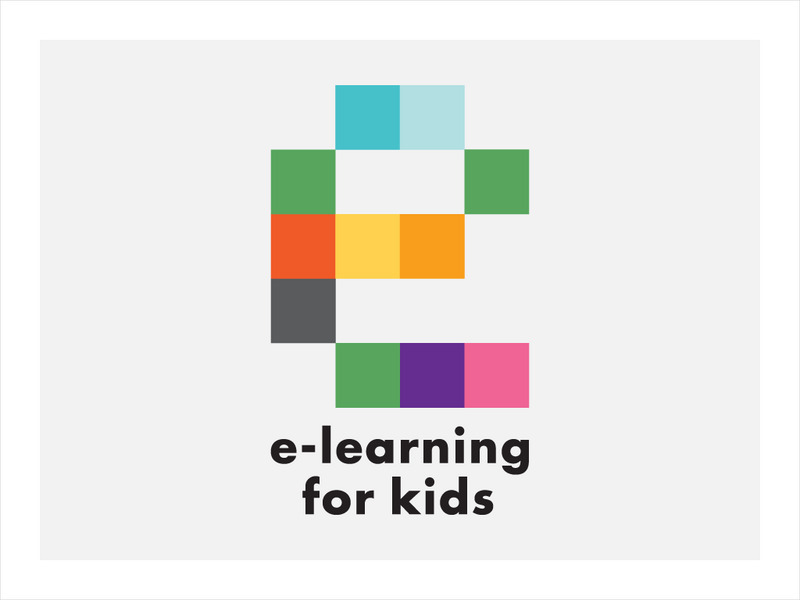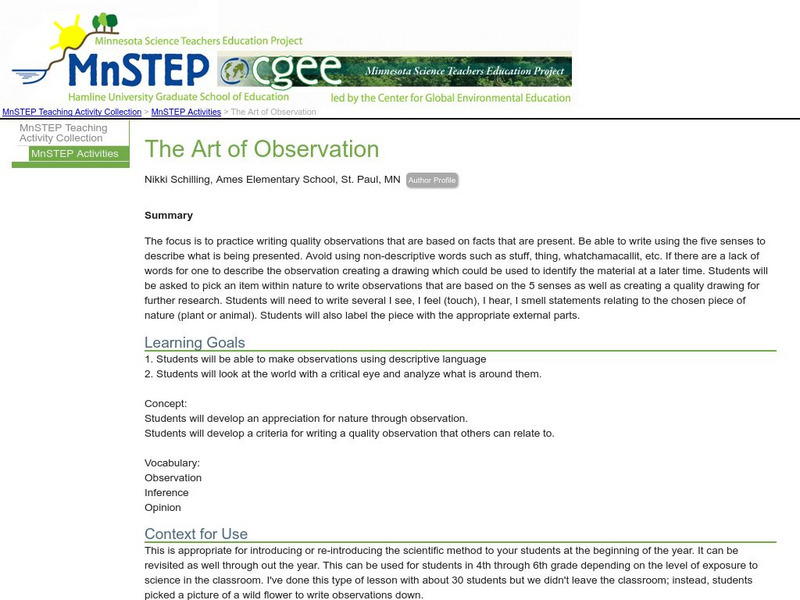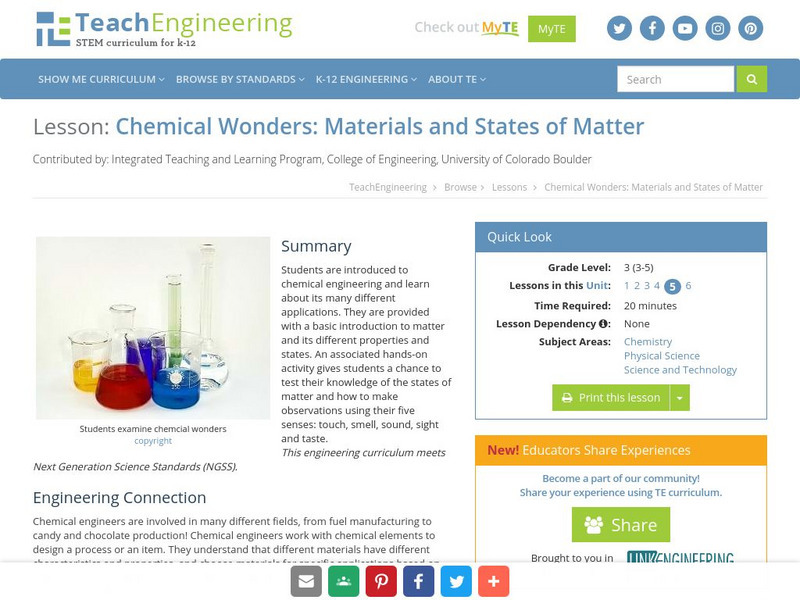Hi, what do you want to do?
Curated OER
Cranes, Crosswalks, and Big Gulps
Pupils watch a video and answer questions based on wildlife jobs. In this wildlife lesson plan, students learn that biologists don't just play with animals but that there is a lot of study involved.
Curated OER
Wh0-o-o-o's Out There?
Fifth graders describe the physical features of an owl and identify survival adaptations. They Investigate an owl's niche in an ecosystem. The students participate in an interactive puzzle on the internet that helps for motivation.
Curated OER
Informational Writing-Creating a Speaker's Voice
Fifth graders study speaker's voice in informational writing. In this writing instructional activity, 5th graders discuss the difference between an interesting non-fiction excert and a reference non-fiction excerpt.
Curated OER
Who was Charles Darwin?
Students trace major developments in the history of evolutionary science. They
discuss the connections between major events in world history and major events in the development of evolutionary thought by creating timelines.
Curated OER
Plants and Oxygen: Breathing
Second graders gain an understanding of how plants produce oxygen and that the oxygen we breathe comes from trees and plants. After a lecture/demo, 2nd graders discuss the ways plants produce oxygen and the detrimental effects of cutting...
Curated OER
Pythagorean Theorem Proof
Tenth graders investigate the Pythagorean Theorem. Then they type up a formal paragraph proof of a proof of their choice.
Curated OER
Animals Abound Pre/Post Assessment
Students prepare for or evaluate their experiences in learning about animal persistence. This is part of a multi-segmented unit on animal living, adaptation, and survival.
Curated OER
Community Service Through Art: Empty Bowls
Fifth graders become more aware of the worldwide poverty issues. Through reading books, they can get a feeling for what the daily life of a person who lives in poverty is like. The research skills studied can be used in different subjects.
Curated OER
Introducing the Incredible RBT-2000
Fourth graders construct a miniature robot using recyclable materials. They write a descriptive explanation from the robot's point of view explaining how it aid in protecting the environment.
Curated OER
Youth Engagement
Young scholars examine and then discuss opposite sides of controversial issues such as neighborhood curfews, lowering voter age, etc. They learn civic responsibility and cultivate tolerance for others' opinions.
Curated OER
Are You Absolutely Sure of the Value?
Seventh graders develop an examineing of absolute value through real world situations. They develop an examineing of when absolute value can be used in a given situation.
Curated OER
The Physics of Tools
Learners investigate the nature and work of simple tools and mechanics.
They explain how each simple machine can be used in real world applications. They explore levers, balance beams, windlasses, wedges, gears, ocarinas, harmonicas,...
Curated OER
The Woods and Pond
Young scholars explore nature in a living, experiencing way. In this woods and ponds lesson plan, students recognize that ponds/woods environments are ecosystems, identify three of the trees in the area by their leaves and bark...
Science Education Resource Center at Carleton College
Serc: Backyard Science the Five Senses
Kindergarten students will use their existing outdoor expertise to help them focus on the scientific study of their five senses in stations.
E-learning for Kids
E Learning for Kids: Science: Australia: Senses: Observation of Unfamiliar Things
Join Sophie in her snorkeling shop from where she explores the Great Barrier Reef. Help her use her five senses to sort the items in her shop.
Science Education Resource Center at Carleton College
Serc: Investigating Oranges How Many Sections Are Inside?
In this biology investigation students will be asked to attempt to determine how many sections exist in an orange without having peeled it. Students will work in small cooperative groups. Each group will be able to use a small magnifying...
Science Education Resource Center at Carleton College
Serc: Investigating Minnesota Tree Leaves
For this biology field exercise, students will collect leaves, describe differences seen in casual and detailed observation and give reasons for the importance of trees. Students will use their five senses to take a closer look at leaves...
E-learning for Kids
E Learning for Kids: Science: Bikini Atoll: Senses: Observation of Familiar Materials and Objects
Students use their senses to identify and describe objects.
E-learning for Kids
E Learning for Kids: Science: Easter Island: Senses: Observation of Living Familiar Things
Students investigate how the senses are used to make observations about objects and things in the environment.
Science Education Resource Center at Carleton College
Serc: Mn Step: The Art of Observation
A lesson in how to write accurate, critical observations that involve using the five senses and unambiguous language.
TeachEngineering
Teach Engineering: Robot Sensors and Sound
Using microphones connected to computers running Audacity software, student teams experiment with machine-generated sounds and their own voices and observe the resulting sound waves on the screen, helping them to understand that sounds...
TeachEngineering
Teach Engineering: Chemical Wonders
Young scholars are introduced to chemical engineering and learn about its many different applications. They are provided with a basic introduction to matter and its different properties and states. An associated hands-on activity gives...


























